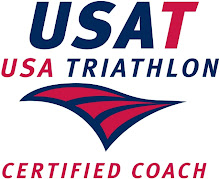One of the biggest mistakes most runners and triathletes make is that they don’t do much in the way of speedwork. I admit that it really is fun to go out with a friend for a 60-90min run and chat. And there is even a place in appropriate training for that. However, if you are trying to get faster and/or would like to stimulate your metabolism a little more, then here is a great workout to help mix things up without being too overwhelmed. And this kind of workout is very different from the shorter speed intervals that I have put out there before.
WHAT: 4 X 1 MILE REPEATS WITH 60-90 SECONDS REST--Well, that is pretty straight forward and simple to understand isn’t it?
WHERE: This can be done as 4 laps on a track or take out on the road if you have a very accurately measured coarse. At our house, we actually have a meter wheel (yes, we are THAT nerdy) and we have measured this kind of thing. Technically, a mile is 1609 meters, but in order to match the track version we just go with 1600 meters so we can compare times.
WHY: This workout is a great way to do some lactate threshold training. That means that you are teaching your body how to run faster before being overcome by lactic acid. Now, lactic acid is a byproduct of your body burning glycogen for fuel (and this is what you burn as you go FASTER than conversation pace,70% of Max Heart Rate, all the way up to running almost anaerobically which is as short and fast as 800 meters.) The lactic acid produced by the body actually gets constantly reabsorbed and also used as fuel. Cool huh? Well the problem comes when you go fast enough, you create more lactic acid than your body can use and reabsorb, so it starts building up and lowering the alkalinity of your muscle. Your muscle becomes acidic enough that it loses electrical impulses and becomes tough to fire and contract at full strength. Mile repeats help your body begin to adapt to higher lactate levels, become more efficient at reabsorbing lactate and eventually run a faster pace at that higher lactate threshold level before becoming overloaded and shutting down.
WHEN: This mile repeat workout can be done once a week with every 4th week or so either doing only 2 or just resting. Give yourself at least a day of rest before and after before attempting another type of hard day or long run.
HOW: Well, just remember that you have to do 4 of these and you want them AS EVEN AS POSSIBLE! So if you run the first mile in 8:05, then all the other miles should be within 5 seconds one way or another. If you have never done these before then pretend you actually have to do 5 or 6 and that will help you not go to fast on the first one or two. Even when you finish the 4th one, you should be able to run a 5th one IF YOU ABSOLUTELY HAD TO! However, if you are totally wiped out, then you did them too hard. You need to save that kind of effort for a race. And you need to be able to wrap your brain around doing this kind of workout each week. So start easy and build confidence by getting faster instead of blowing up.
WHAT YOU LEARN: You learn two big concepts by doing this kind of workout:
- First you start learning how to be mentally focused and tough enough to do this kind of work. That will transfer over beautifully to a race since it will develop the many of the mental skills needed to run faster.
- Second you learn what you can run a 5k or a 10k at! The average pace you run for each mile is pretty much what you should be able to string together for a 5k. So if you run an 8:00min/mile average, then that is the pace you should be able to race a 5K IF YOU ARE MENTALLY FOCUSED. It won’t come easy, but it can be done. Also, if you add about 15 seconds per mile (maybe a hair more or less,) then you have the potential of running a 10K at about 8:15 per mile.
So if you are ready to try something new, then give this a go!













